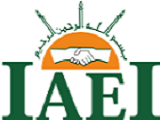Causality Relationship between Interest Rate of Deposit Banks and Profit Share Rate of Islamic Banks in Turkey
Abstract
Full Text:
PDFReferences
Abdul Aziz, M., Habibullah, M. S., Ngah, W., Saini, W. A., & Mohamed, A. (2000). Testing for causality between taxation and government spending: An application of Toda-Yamamoto approach. Pertanika Journal of Social Sciences & Humanities, 8(1), 45-50
Adebola, S. S., Yusoff, W. S. W., &Dahalan, J. (2011). The impact of macroeconomic variables on Islamic banks financing in Malaysia. Research Journal of Finance and Accounting, 2(4), 22-33.
Adewuyi, A., &Naim, M. (2016). The Nexus Between Rates of Return on Deposits of Islamic Banks and Interest Rates on Deposits of Conventional Banks in a Dual Banking System: A Cross Country Study. International Journal of Economics and Financial Issues, 6(4S), 111-117.
Amiri, A., &Ventelou, B. (2012). Granger causality between total expenditure on health and GDP in OECD: Evidence from the Toda–Yamamoto approach. Economics Letters, 116(3), 541-544.
Anuar, K., Mohamad, S., & Shah, M. E. (2014). Are Deposit and Investment Accounts in Islamic Banks in Malaysia Interest Free?.Journal of King Abdulaziz University: Islamic Economics, 27(1), 27-55.
Ata, H. A., Buğan, M. F. &Çiğdem, Ş. (2016). Kar PayıOranları İle MevduatFaizOranlarıArasındakiNedensellikİlişkisi, Ç.Ü. SosyalBilimlerEnstitüsüDergisi, 25(1), 17-28
Avcı, T., &Aktaş, M. (2015). KatılımBankalarının Kar PayıÖdemeleri İle MevduatBankalarınınFaizÖdemelerininBirbirlerineYakınOlmasınınNedenlerininAraştırılması. NiğdeÜniversitesiİktisadiveİdariBilimlerFakültesiDergisi, 8(4), 41-51.
Bacha, O. I. (2004). Dual banking systems and interest rate risk for Islamic banks.
Bilgin, C., &Sahbaz, A. (2009). Türkiye’de Büyümeve İhracat Arasındaki Nedensellikİli şkileri. Gaziantep Üniversitesi Sosyal Bilimler Dergisi, 8(1), 177-198.
Cevik, S., &Charap, J. (2011). The behavior of conventional and Islamic bank deposit returns in Malaysia and Turkey. IMF Working Papers, 1-23.
Chong, B. S., & Liu, M. H. (2009). Islamic banking: interest-free or interest-based?. Pacific-Basin Finance Journal, 17(1), 125-144.
Dincer, H., Hacioglu, U., &Yuksel, S. (2016). Balanced scorecard-based performance assessment of Turkish banking sector with analytic network process. International Journal of Decision Sciences & Applications-IJDSA, 1(1), 1-21.
Ergeç, E. H., & Arslan, B. G. (2013). Impact of interest rates on Islamic and conventional banks: the case of Turkey. Applied Economics, 45(17), 2381-2388.
Ergeç, E. H., &Kaytanci, B. G. (2014). The causality between returns of interest-based banks and Islamic banks: the case of Turkey. International Journal of Islamic and Middle Eastern Finance and Management, 7(4), 443-456.
Ersin, İ., & Duran, S. (2017). Faizsiz Finans Döngüsünü Oluşturma Açısından Adil Ekonomik Düzen Söyleminin Kredileşme İlkeleri ve Uygulanabilirliğinin Değerlendirilmesi. Electronic Turkish Studies, 12(8), 109-132.
Guru-Gharana, K. K. (2012). Econometric investigation of relationships among export, FDI and growth in India: An application of Toda-Yamamoto-Dolado-Lutkephol Granger causality test. The Journal of Developing Areas, 46(2), 231-247.
Haron, S., & Ahmad, N. (2000). The effects of conventional interest rates and rate of profit on funds deposited with Islamic banking system in Malaysia. International Journal of Islamic Financial Services, 1(4), 1-7.
Ito, T. (2013). Islamic rates of return and conventional interest rates in the Malaysian deposit market. International Journal of Islamic and Middle Eastern Finance and Management, 6(4), 290-303.
Kader, R. A., & Leong, Y. K. (2009). The impact of interest rate changes on Islamic bank financing. International Review of Business Research Papers, 5(3), 189-201.
Kaleem, A., & Isa, M. M. (2003). Causal relationship between Islamic and conventional banking instruments in Malaysia. International Journal of Islamic Financial Services, 4(4), 1-8.
Kartal, M.T. & Demir, C. H. (2017). Türkiye'de Katılım Bankacılı ğında Sorunlu Kredilerin Varlık Yönetim Bir İncelemeve Yöntem Önerileri. İslam Ekonomisive Finansı Dergisi (İEFD), 3(1), 89-115.
Kasri, R., &Kassim, S. H. (2009). Empirical determinants of saving in the Islamic banks: Evidence from Indonesia. Ahmad, N. and Haron, S.(2002)“Perceptions of Malaysian Corporate Customers Towards Islamic Banking Products and Services”, International Journal of Islamic Financial Services, 3(4), 13-29.
Narayan, P. K., & Narayan, S. (2006). Government revenue and government expenditure nexus: evidence from developing countries. Applied Economics, 38(3), 285-291.
Purnamasari, F., & Darmawan, A. (2017). Islamic Banking and Empowerment of Small Medium Enterprise. ETIKONOMI, 16(2), 221-230.
Saraç, M., & Zeren, F. (2015). The dependency of Islamic bank rates on conventional bank interest rates: further evidence from Turkey. Applied Economics, 47(7), 669-679.
Sghari, M. B. A., &Hammami, S. (2013). Relationship between health expenditure and GDP in developed countries. IOSR Journal of Pharmacy, 3(4), 41-45.
Tariq, A., & Masih, M. (2016). Risk-sharing deposits in islamic banks: do interest rates have any influence on them?.
Toda, H. Y., & Yamamoto, T. (1995). Statistical inference in vector autoregressions with possibly integrated processes. Journal of econometrics, 66(1), 225-250.
Tuncer, İ. (2002). Türkiye’deİhracatİthalatveBüyüme: Toda Yamamoto Yöntemiyle Granger NedensellikAnalizleri 1980 2000. ÇukurovaÜniversitesiSosyalBilimlerEnstitüsüDergisi, 9(9), 89-107.
Wolde‐Rufael, Y. (2008). The Revenue–Expenditure Nexus: The Experience of 13 African Countries. African Development Review, 20(2), 273-283.
Yüksel, S., &Erturk, M. (2013). Casual Link Between Islamic and Conventional Banking: Evidence From Turkish Banking Sector (No. 06).
Yüksel, S., &Zengin, S. (2016). Causality Relationship Between Import, Export and Growth Rate in Developing Countries. International Journal of Commerce and Finance, 2(1), 147-156.
Zainol, Z., &Kassim, S. H. (2010). An analysis of Islamic banks’ exposure to rate of return risk. Journal of Economic Cooperation and Development, 31(1), 59-84.
Zakaria, R. H., &Sanwari, S. R. (2013). The Performance of Islamic Banks and Macroeconomic Conditions. ISRA International Journal of Islamic Finance, 5(2), 83-98.
DOI: http://dx.doi.org/10.24042/febi.v2i2.1894
Refbacks
- There are currently no refbacks.
Copyright (c) 2017
Ikonomika : Jurnal Ekonomi dan Bisnis Islam is a Journal of Islamic Economics and Business, Published by the Faculty of Islamic Economics and Business at UIN Raden Intan Lampung Indonesia. This work is licensed under a Creative Commons Attribution-ShareAlike 4.0 International License.






11.png)



.png)
1.png)
.png)
.png)
.png)
2.png)
.png)
.png)
.png)
2.png)
5.png)